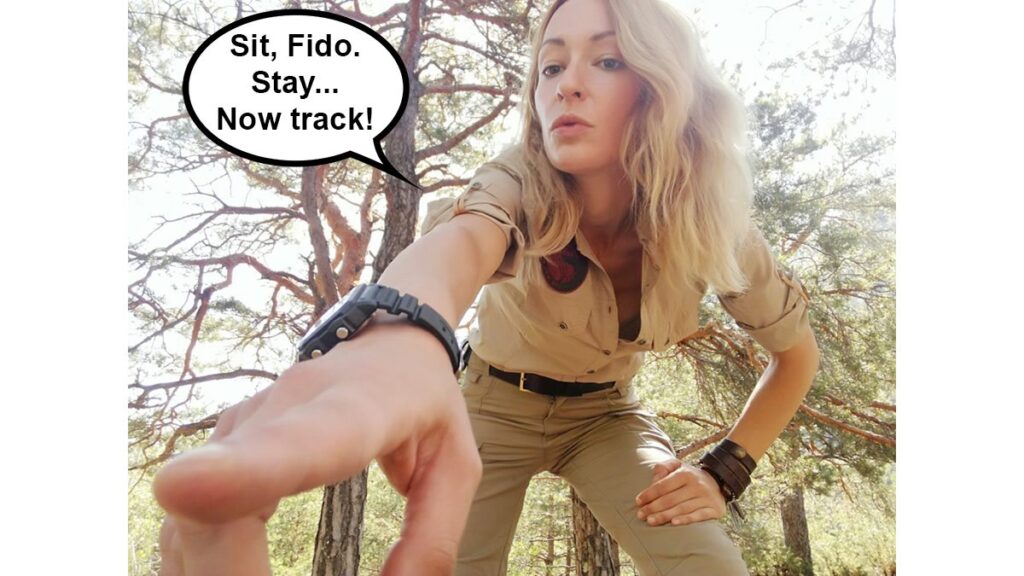
K9, Drones, and Trackers – an Introduction
In the basic level Mantracking Classes I lead for Hull’s Tracking School, but also during workshops at gatherings and festivals, people often ask me if K9s (and drones) can represent a real – and consistent – aid to trackers in locating and rescuing missing subjects.
As in all the skills that have been handed down from the past, the addition of new “elements” to the tradition comes with some pros and cons.
In this article we will discuss how and why dogs can either accelerate or slow down the efforts of trackers.
In a SHTF situation, the use of drones seems to aid tracking seems to be far a less likely option for several reasons. Beside batteries, drones can be an easy target for hunters, and their fragility and shape make them such an unwanted tool to have (for me, anyway).
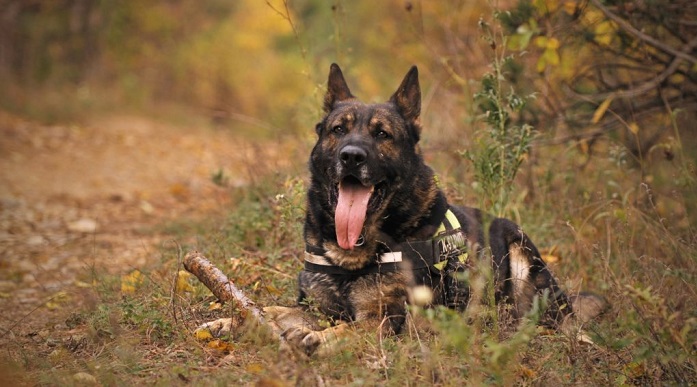
Technology and Tracking
A foreword is more than appropriate here. The art of tracking has stuck to core principals for thousands and thousands of years. Nothing seems to have really changed within tracking since primitive times.
Related article: Survival Situation: Dog Gone or Dog Stays?
Nowadays, we learn how to track exactly in the same manner primordial men did, applying the equal level of awareness, observation, and, consequently, deduction based on what we see on the ground. We collect data from the tracks literally in the same way Indian Scouts did.
So, why should we need additional aid in reading and following tracks?
The very essence of this answer lies in one word: acceleration. This is especially if you find yourself in an emergency situation.
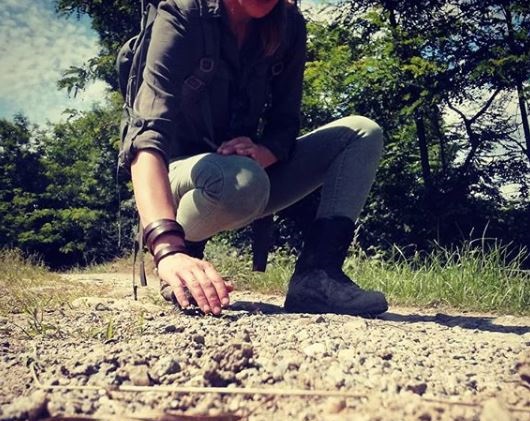
Tracking Experience Makes the Difference
Tracking, as lot of you may know, requires patience, dedication, shrewdness and… time. Sometimes, a lot of it, especially if you are tracking on tough terrains, highly contaminated by the presence of other human, animal tracks, or even tire tread evidence.
That said, in these specific circumstances any additional help to cut the “time-distance” gap between you and the fugitive, or the missing person/s, means making the difference. Think, for example, of Search and Rescue volunteers. Each minute counts!
Trackers can save lives, but what if they find themselves repeatedly losing the trackline?

K-9s and Tracking
So, here comes the K9 as a remarkable tracker companion, you might say.
Highly trained dogs can find – and follow – even two-day old (and more) tracks. They have been employed in that way before the famous Combat Tracker Units in Vietnam, from search and rescue (SAR) missions to tactical scenarios.
Let me mention you that some of our Rangers from Conservation Rangers Operations Worldwide (the NGO I work for as an Anti-Poaching Certified Ranger) have actually worked with K9 Units, being amazed by the responsiveness and speed the dogs demonstrated in locating and stopping poachers.
This happens quite regularly in South Africa, for example, but also in Congo (Virunga National Park), Zimbabwe. The most common breeds used are Malinois, Boerboel, and Weimareiner.
A K9 Handler and Tracking School
Talking about SAR, I have personally taken part in a demo which involved a “skilled” Bloodhound back in Spring 2019. I have that day stuck in my mind. It was a pretty sunny morning with a quite total absence of wind.
The dog took very few minutes to locate the person who pretended to be lost in a very contaminated scenario. The handler was very proud of his dog, and yes very uninterested in the art of tracking. He wanted to hear nothing about why tracking could get benefit his local SAR team. I felt really frustrated as I truly believe that “unity makes strength,” especially if you are committed to saving lives.
On my way back, I did a small report to Mike Hull, my mentor, who has gained a lot of experience with K9 handlers. He said:
“Handlers rely completely on the K9 to do all the work while they should be assisting and setting them up for success.
To get a dog started, they need a beginning point and hope for a scent article. Often that is not available. By teaching them to identify size, type and pattern of a quarry’s shoe, they can ensure the right scent trail is that of their quarry.
By circling the contaminated area without the canine and locating sign exiting the area, they can then lead the dog to that line of sign and deploy the canine on it and the K9 will identify with that specific scent.“
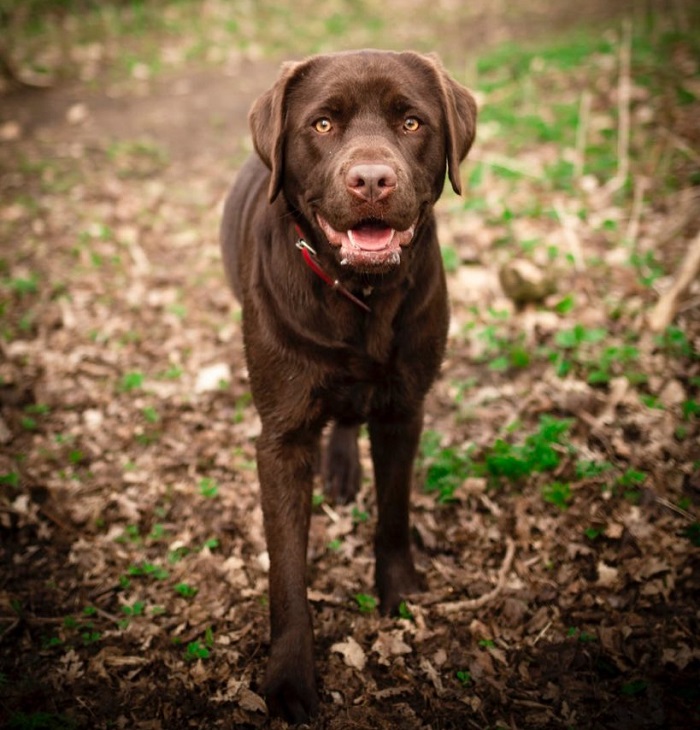
K9 + Tracker = Valuable Combination of Skills
A good friend of mine, Helene Jordan-Dodge, was a major contributor to, and influential force, for the Virginia search and rescue community for more than twenty-five years. She confirmed Mike’s view on the role of K9 during rescue activities: combining the use of dogs with solid tracking skills can’t be bad when it comes to locating missing subjects.
Thus, considering the pros, no doubt canines are faster than humans when following a trail. This, of course, is thanks to their incredible sensitive sense of smell: “[…] they possess up to 300 million olfactory receptors in their noses, compared to about six million in us. And the part of a dog’s brain that is devoted to analyzing smells is, proportionally speaking, 40 times greater than ours […]” (www.pbs.org)
Their ability to identify the right tracks is certainly more instinctual than ours.
So, what about the cons?
Dogs can fail if trying to track in the following conditions:
- no scent available
- very strong windy day/s
- heavy storms
- if the trackline is extremely old
All the above mentioned scenarios, in fact, can cause a loss of the dog’s smell (and focus).
Any handler should be extremely familiar with his canine. That’s why is of utter importance, for the handler, to be able to look for clues himself. Collecting data from the terrain and applying it to his/her tracking skills in the heat of locating pursuit.
K9s and Trackers
Having a trained dog when following a subject is surely a good thing.
Beyond being – or even sounding – biased, the following list includes the best ten dog breeds “with the best sense of smell“:
- Bloodhound
- Beagle
- Basset Hound
- German Shepherd
- Labrador Retriever
- Belgian Malinois
- Coonhound
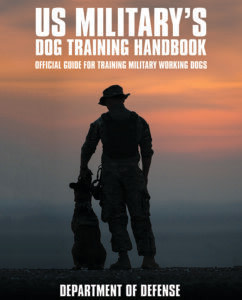
Getting a professional training for your dog surely involves a lot of time, dedication, and money. Your dog is your companion, however, so it is time well-invested. Dogs can serve many purposes in a SHTF situation. If you need help training, consider the U.S. Military’s Dog Training Handbook.
Nonetheless, if you consider a dog as potential resource in an emergency situation (never forgetting he needs your care!) you may consider the chance to grow one and combine the tracking skills you already honed over the years.
How You Can Use K9s for Tracking
I will never stress enough the importance of some dirt time (training time, in tracking terminology). Take an assessment of how much free time you have at your disposal and take advantage of each single minute of it to consolidate your tracking abilities in combination with the employment of your dog.
Ask, for example, a friend or a member of your family to hide somewhere in the woods. Wait for 10 minutes and then start reading his/her tracks, bringing the dog with you. You can repeat this exercise stretching the time frame till to an hour or two, depending by your availability (and by the patience of the “missing subject!”).
Want to avoid being found? See Stay Hidden While Traveling by Foot.
Observe the reaction of your dog and ask a professional dog trainer as well as a professional tracker how you can improve your synergy.
Time after time, you will be surprised by the levels of harmony you will reach with your dog, as you can replace him/her anytime the animal loses the scent. And conversely!
“We have two VA Game Wardens who are canine handlers and tracking instructors who make triple the cases than all the other canine handlers in their department because they do not rely totally for the dogs to do all the work.”
– David Michael Hull
